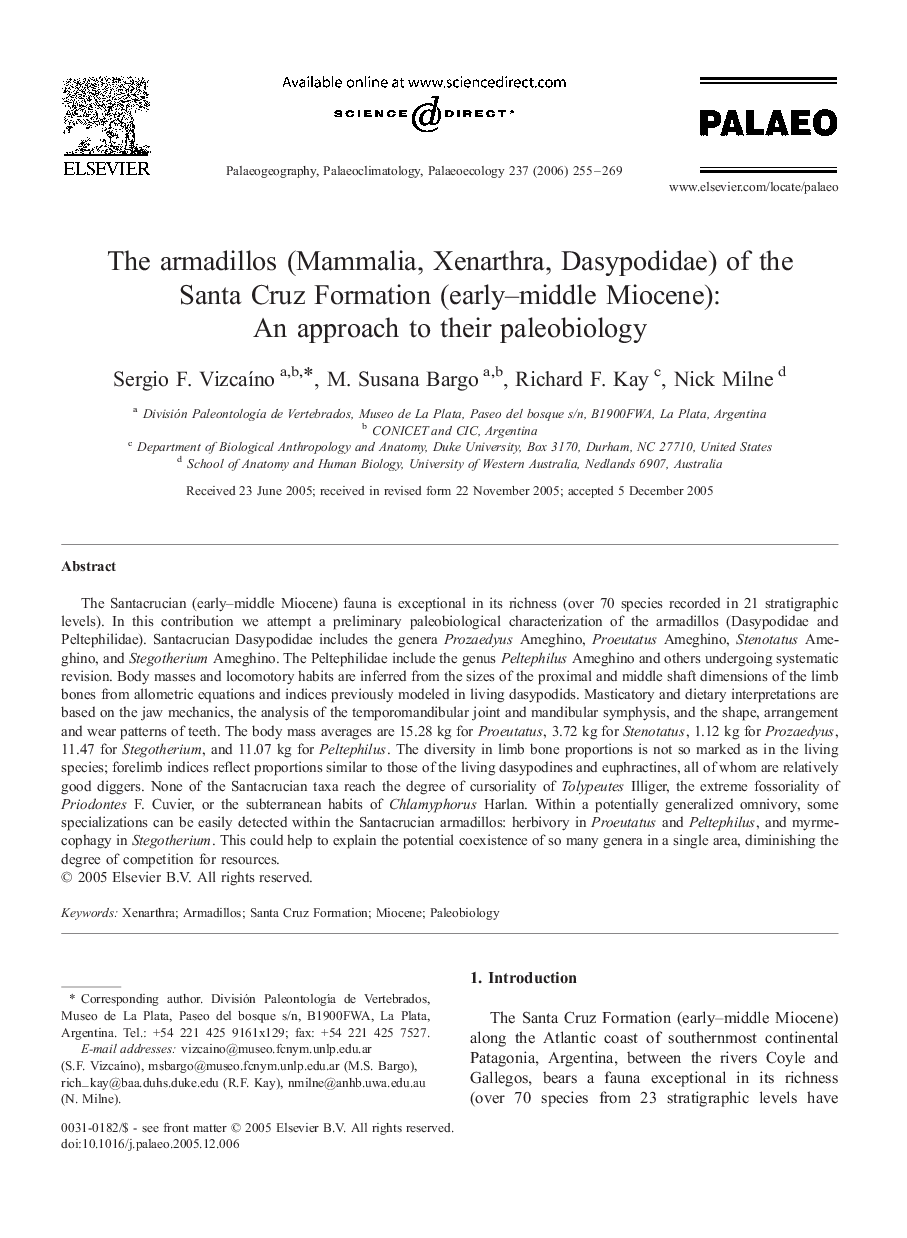| کد مقاله | کد نشریه | سال انتشار | مقاله انگلیسی | نسخه تمام متن |
|---|---|---|---|---|
| 4469411 | 1622370 | 2006 | 15 صفحه PDF | دانلود رایگان |

The Santacrucian (early–middle Miocene) fauna is exceptional in its richness (over 70 species recorded in 21 stratigraphic levels). In this contribution we attempt a preliminary paleobiological characterization of the armadillos (Dasypodidae and Peltephilidae). Santacrucian Dasypodidae includes the genera Prozaedyus Ameghino, Proeutatus Ameghino, Stenotatus Ameghino, and Stegotherium Ameghino. The Peltephilidae include the genus Peltephilus Ameghino and others undergoing systematic revision. Body masses and locomotory habits are inferred from the sizes of the proximal and middle shaft dimensions of the limb bones from allometric equations and indices previously modeled in living dasypodids. Masticatory and dietary interpretations are based on the jaw mechanics, the analysis of the temporomandibular joint and mandibular symphysis, and the shape, arrangement and wear patterns of teeth. The body mass averages are 15.28 kg for Proeutatus, 3.72 kg for Stenotatus, 1.12 kg for Prozaedyus, 11.47 for Stegotherium, and 11.07 kg for Peltephilus. The diversity in limb bone proportions is not so marked as in the living species; forelimb indices reflect proportions similar to those of the living dasypodines and euphractines, all of whom are relatively good diggers. None of the Santacrucian taxa reach the degree of cursoriality of Tolypeutes Illiger, the extreme fossoriality of Priodontes F. Cuvier, or the subterranean habits of Chlamyphorus Harlan. Within a potentially generalized omnivory, some specializations can be easily detected within the Santacrucian armadillos: herbivory in Proeutatus and Peltephilus, and myrmecophagy in Stegotherium. This could help to explain the potential coexistence of so many genera in a single area, diminishing the degree of competition for resources.
Journal: Palaeogeography, Palaeoclimatology, Palaeoecology - Volume 237, Issues 2–4, 4 August 2006, Pages 255–269